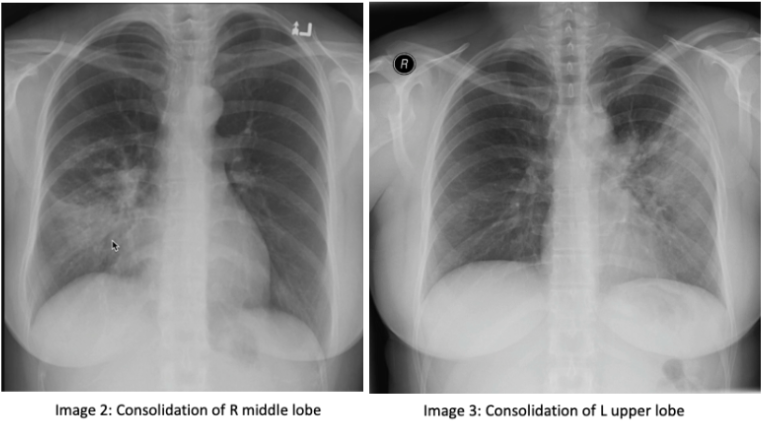What’s up gang?
My POTD will address something that I’m sure has happened to all of us (or will happen if hasn’t already). You’re about to order a good ol’ study with contrast in the donut of truth when you run into the pop up telling you to STOP because this patient has a recorded allergy or reaction to “contrast” or “iodine.”
What do you do now?
a) Order the study anyway and hope for the best, carrying on with your other bajillion patients
b) Be physically at CT with epi, steroids, antihistamines in hand while your patient gets the scan
c) Pull up this POTD to remember what to do next
Skip to the end for the TL;DR
Let’s break this issue down from the beginning. First of all, it’s actually a myth that patients can have an allergy to iodine. They may have had this recorded for some reason based on a prior reaction to something that contained iodine, but iodine was not the component that caused the reaction. Iodine is found throughout our bodies in thyroid hormone and almost all salt in the US has iodine added to avoid deficiency. It would be like saying you have an allergy to potassium (which fun fact, I once had a patient with that listed as an allergy because of some reaction she had to a medication she had in her home country).
On a side note, patients with shellfish allergies are sometimes tagged as unable to get IV contrast because of the iodine content and similarly, it is not the iodine that is the problem, but two proteins in shellfish, specifically tropomyosins and parvalbumin.
But doc I swear the last time I got contrast, I started getting a rash…
To clarify here, the reaction to contrast is most likely an anaphylactoid one, not true anaphylaxis. In an anaphylactic reaction, your body makes antibodies (IgE) upon first time exposure to the allergen and any subsequent exposures result in massive degranulation of mast cells and histamine release from the antibody/antigen complexes leading to the shock state and respiratory compromise that is characteristic of anaphylaxis. In an anaphylactoid reaction, primary exposure to a substance causes purely histamine release without the involvement of antibodies.
It’s likely that in the past, this patient had a load from a high osmolar contrast, which has a higher rate of adverse reactions due to a more complex structure and size that can stimulate histamine release more strongly. Nowadays 90% of CT scans are done with a low-osmolar contrast, including at Maimo. Ours is called iohexol/omnipaque. With low osmolar contrasts, the statistics show that only 3% of patients will experience a reaction, with the majority of those being mild (nausea, urticaria). 0.4% will have a moderate reaction (severe vomiting, extensive urticaria, dyspnea) and 0.04% will have a severe life-threatening reaction (respiratory or circulatory collapse). This is why it’s important to ask the patient exactly what their reaction was because there is such a wide spectrum and allergies are often thrown into the chart without any caution. Also of note is that, just because a patient has had a reaction to one contrast does not mean that all contrasts will induce the same reaction, so whenever possible, the name of the actual contrast should be recorded in the EMR, not just an allergy to “contrast” in general.
At Maimo, our protocol is that if a patient has had a prior adverse reaction to contrast documented in the chart, they should get pretreatment with 200mg IV hydrocortisone and then 5 hours later get another 200mg IV hydrocortisone with 50mg IV Benadryl. One hour after that combined dose is when the patient can then get the scan. So total of 6 hours since the initial steroid dose.
Interestingly enough, even though this is the recommendation, multiple papers have showed that this is only useful to prevent a mild anaphylactoid reaction. It had no statistically significant effect on preventing moderate or severe adverse reactions. Despite this the American College of Radiologists (ACR) still recommend to pretreat because it seemed to have small reduction in respiratory symptoms and hemodynamic compromise in patients getting low-osmolar contrast with an NNT of 100-150. However, the ACR states that “contrast reactions occur despite premedication prophylaxis” and that premedication should not delay CT scan in emergent situations.
I personally have never had a patient suffer from true anaphylaxis after contrast and all patients that I’ve pretreated per protocol have also gotten their scans without incidence, so I guess if it ain't broken, don't fix it.
TL;DR
- Patients very very very rarely have a true anaphylactic reaction to the contrast that we use at Maimo. Find out exactly what their reaction was in the past and tailor your plan accordingly.
- To pretreat per our protocol: 200mg IV hydrocortisone -> 5 hrs later another 200 mg IV hydrocortisone + 50mg IV Benadryl -> 1 hr later get scan (you can also call the radiology resident for this if you ever forget it!).
- The evidence out currently does not seem to support that pretreatment helps prevent moderate or severe reactions but does seem to reduce the mild (though unpleasant) reactions.
- Premedication should not delay the CT scan when the clinical information that a CT scan will give is critical to the management of the patient.
- Iodine allergies are not compatible with life.
References
https://emcrit.org/emcrit/contrast-reactions/
https://www.nuemblog.com/blog/contrast-allergies-for-the-em-physician
https://www.emdocs.net/iv-contrast-myths/
https://rebelem.com/clinical-conundrums-should-i-pretreat-patients-with-contrast-allergy-prior-to-iv-contrast-administration/2/
https://radiopaedia.org/articles/iodinated-contrast-media-adverse-reactions?lang=us





